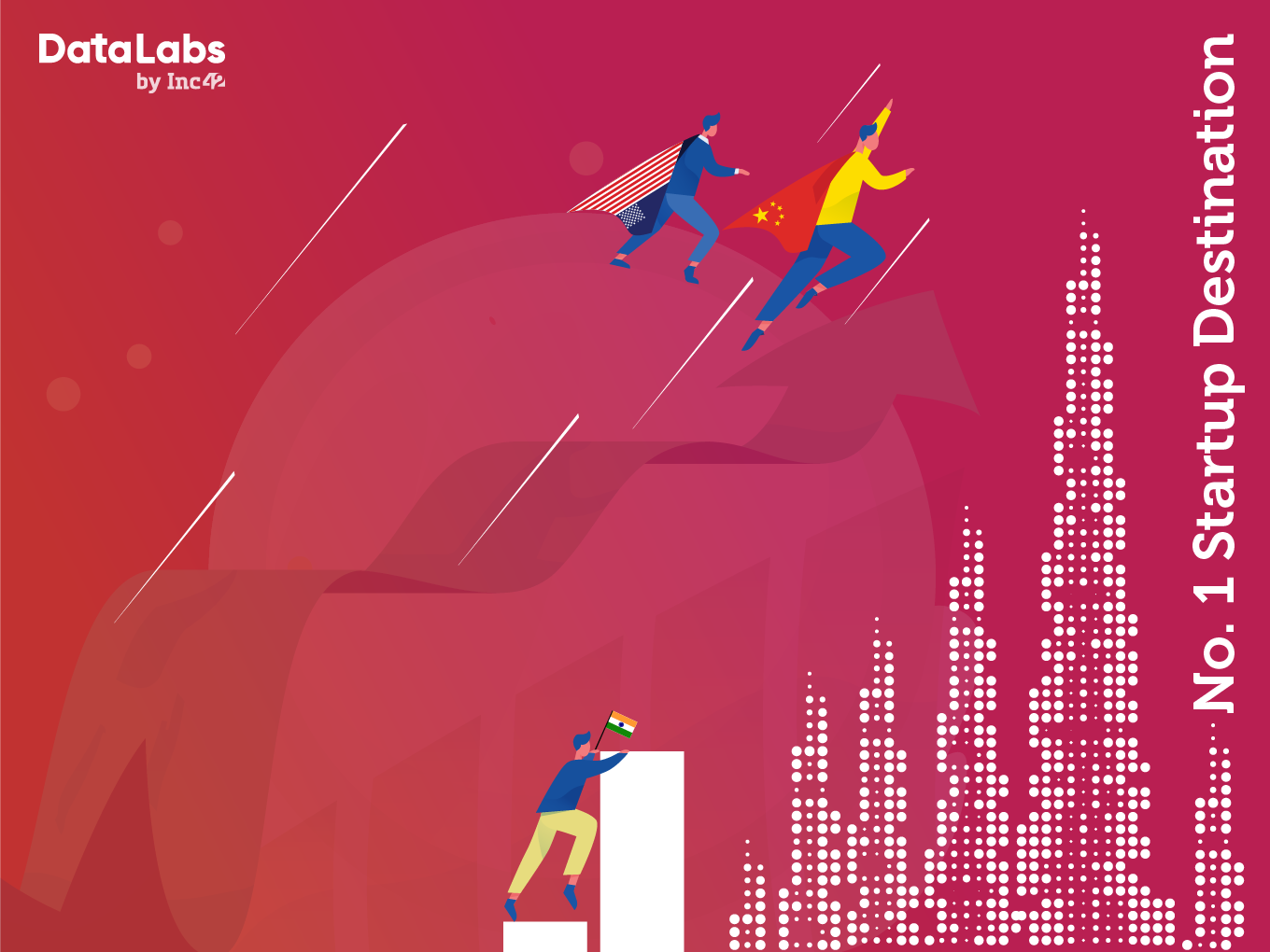SUMMARY
The count of unique startups being funded in India is diminishing at a rate of -7% year on year from 2015 to 2018
The low median age of the Indian population and rising disposable income has created a big opportunity for startup services and products
Government policy changes and regulatory hurdles have suppressed startup supply and growth despite rising demands in India
Today, Asia is the biggest internet market in the world — about 50% of the total 4.4 Bn plus internet users in the world are based out of Asian countries, and around 63% (or 1.38 Bn) of these users are based in China and India alone. The significance of Asian countries (especially India and China) in the global consumer internet market can be interpreted from the fact that as of June 2019, about 31% of the total internet users in the world hail from these two Asian giants.
But just a few decades back, the United States of America was considered the only economy for a scalable and sustainable market for consumer internet products. This can be attributed to the fact that the penetration of the internet in other countries was comparatively lower in comparison to the US.
In the year 2000, the percentage of internet users to the total population of the United States (43%) towered over India (0.52%) and China (1.78%). Today, the combined internet user base of India and China is 4x higher than the total number of internet users of North America.
The technology revolution enabled by tech startups in India and China has been the driving force behind increasing this development. Although the internet as a service is still dominated by established business tycoons in both markets, the utility of internet and technology among the masses in both India and China can be credited to new-age tech startups. The shift in investor confidence from western startup economies to Asia is also due to changing consumer market landscape in Asian in terms of rising household income, increased access to internet and favourable policies, whereas in the US, the consumer market was already mature and as a result many sectors have reached saturation point in the US.
China Set To Usurp Silicon Valley’s Place In Global Startup Landscape
Although the Indian startup ecosystem has come a long way since 2015 when compared to the prominent global startup ecosystem such as the United States and China, the progress made by the Indian startup ecosystem so far looks paltry.
This is evident from the fact that since 2015 the growth rate of both average ticket size of funding amount and year on year count of the unique startup founders in India is significantly lower than the US and China, as seen above.
Indicators such as average ticket size for investment and year-on-year count of unique startups funded as well as the count of unique startup founders show the maturity of a startup ecosystem. And are more significant in determining a startup ecosystem’s growth trajectory than the widely used indicators such as the overall funding amount and deal count, which are often trivial and only present a bird’s-eye view of the ecosystem, and not always representative of the ground reality.
During the interim budget of 2019 in February, the then finance minister Piyush Goyal had claimed that India is the second-largest startup ecosystem in the world. This claim was primarily due to a large number of startups operating in India, which is one of the most misleading indicators to gauge the health of a startup ecosystem.
As per DataLabs by Inc42 estimates, India is home to more than 39K active startups but the count of unique startups that received funding from 2014 to H1 2019 is just 2,773. This is an indication of the high failure rate of startups in India and raises questions about the quality of startups which are mushrooming in the Indian ecosystem. In addition to this, the count of unique startups being funded in India is diminishing at the rate of -7% from 2015 to 2018. On the other hand, the same is growing at a rate of 112% in China and 37% in the USA.
Overall, we can say that among these three prominent startup nations of the world, the state of venture capital activity in China is much better than the United States and India.
Market Factors Enabling The Growth Of Startup Ecosystem And Their Future Implications
A lot of positive announcements and proclamations has been made so far in the context of the growth of the Indian economy. Two of the most crucial factors behind these optimistic predictions are the rising household income and the higher concentration of the youth in the total population.
As evident above, India has seen the second highest surge in terms of GNI per capita (65%) from $4.2K in 2010 to $7.06K in 2017, and in addition to this, the median age of the Indian population is 32% lower median age of China, and 36% lower than the United States.
India’s Demand For Startups Outpaces Policy Creation
But these positive indicators in terms of demographics and rising purchasing power are masking the underlying problems in the Indian context. Take, for instance, the Business Confidence Index (BCI), which is used to gauge the potential of development in an economy. In BCI, a number above 100 indicates positive sentiments whereas below 100 indicates negative sentiment. Only the United States had a BCI score above 100 for 2018. In case of India and China, the monthly BCI score throughout the year 2018 was lower than 100, and the yearly average BCI score of India was 99.68, slightly higher than China’s score of 99.39. This indicates that the Indian market has a long way to go before catching up to the US in terms of capitalising on the growth opportunity.
The trade war between China and the United States could be one reason behind China’s lagging BCI score in the year 2018. And while India is also caught in the middle of this battle thanks to the high dependency on imports from China, the real reasons for India lagging behind the US is actually the inefficacy of government policies and the confusion created in the market.
Policy uncertainty and the revival of government licenses in India — as the government looks to make the economy more “nationalistic” — can be attributed to the pessimistic BCI score.
With the positive indicators such as young population and increasing purchasing power, the demand side in the context of India startup economy looks solid, whereas the supply side (market players and regulators) seem to be lagging, which has created an imbalance where the opportunity is massive but the means to grab that opportunity are limited or curtailed.
The government’s proactive push towards domestication and over-regulation of the Indian economy has created an atmosphere of policy uncertainty in the overall economy, even though many of them have been claimed to have been put in place to boost growth. This has eventually resulted in decreasing investor confidence towards the Indian startup ecosystem, drying up of seed funding, a decline in M&As and higher FDI outflow from the overall economy.
The Indian startup ecosystem will only be able to grow at its full potential if the government startup policies are implemented smartly and election promises are honoured.
As the demand side stays strong, disruptive sector-specific policies — ecommerce bill for FDI, data and merchant rules, epharma bill, fintech data localisation as well as the promise of seed funding under the government’s Startup India initiative and others — need to be implemented in a more collaborative manner to minimise market disturbance. As seen from the decline in venture capital activity in the Indian market, disruptive policy changes tend to have a negative impact on investor confidence which acts as a hurdle for the startup and digital economy as a whole.
CHECKOUT DATALABS BY INC42


























